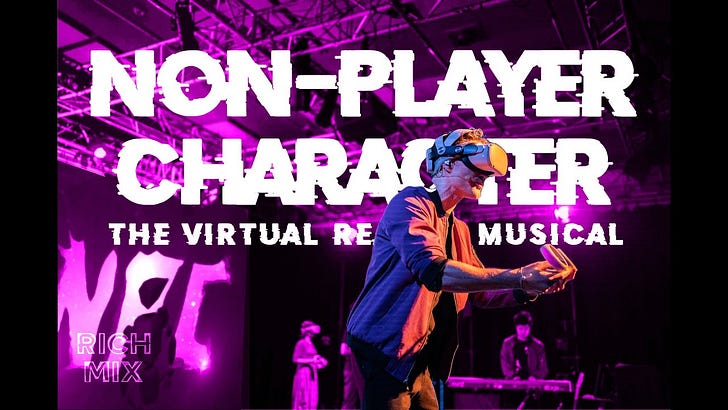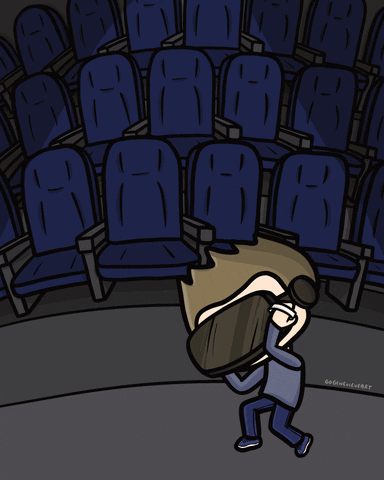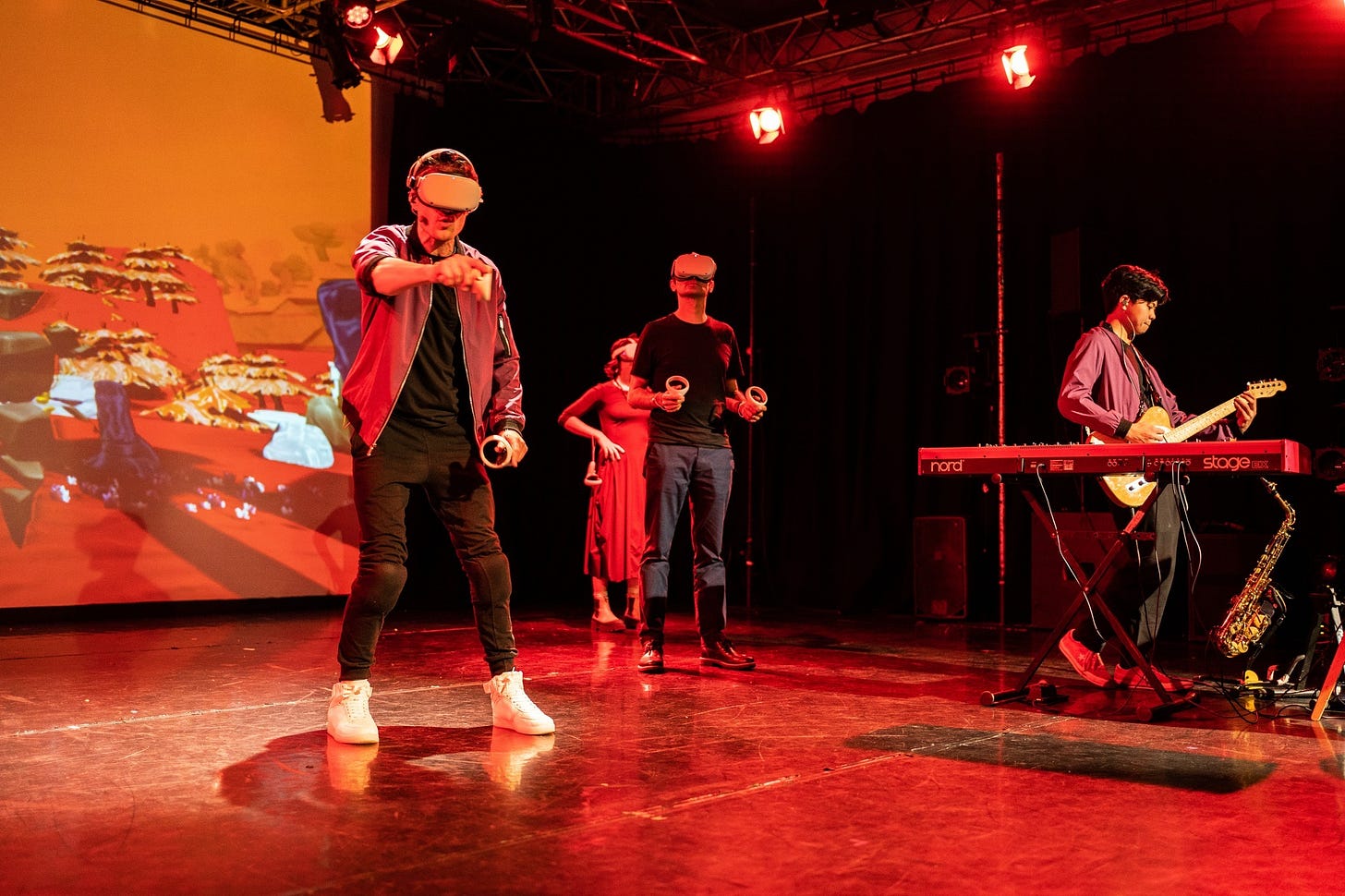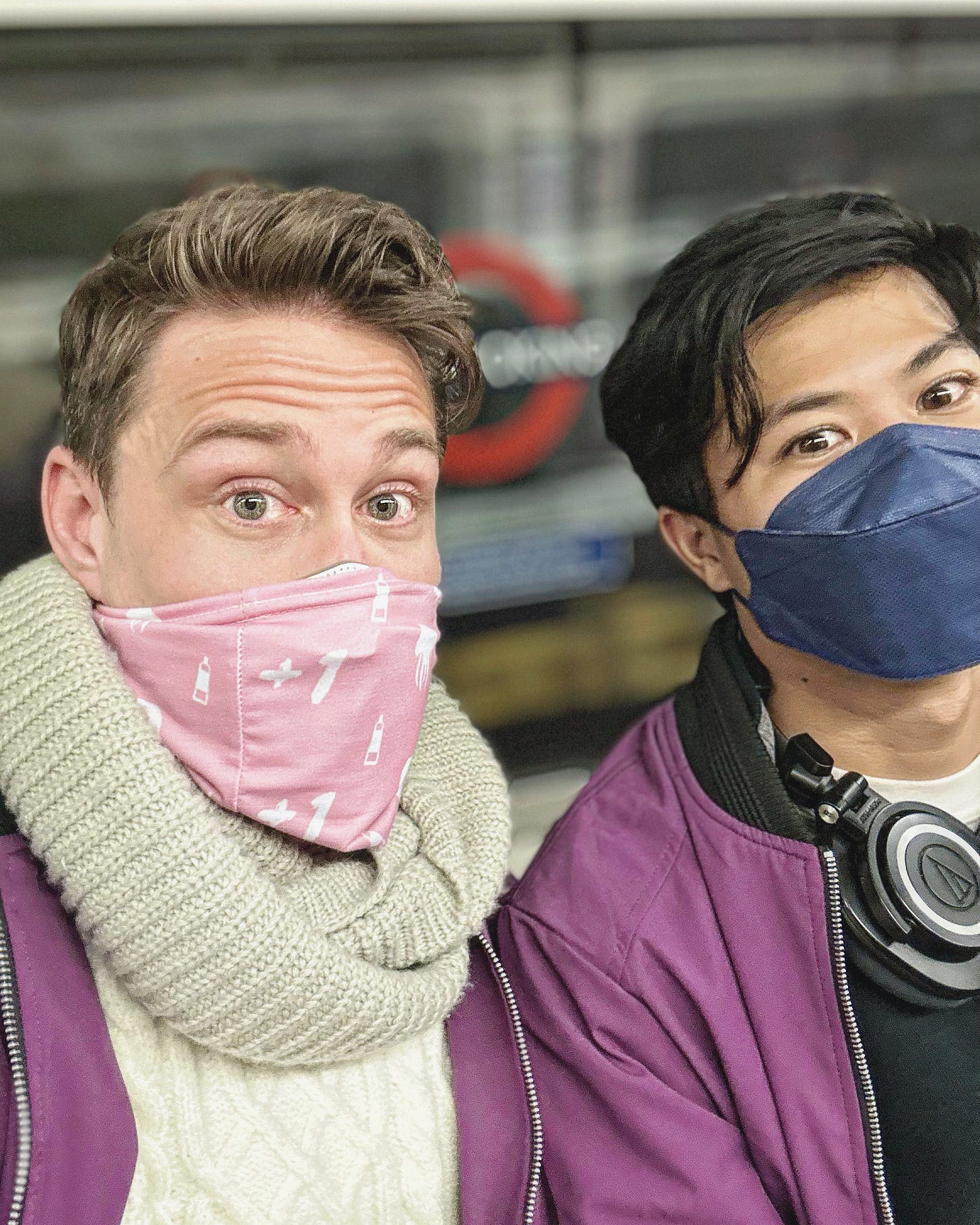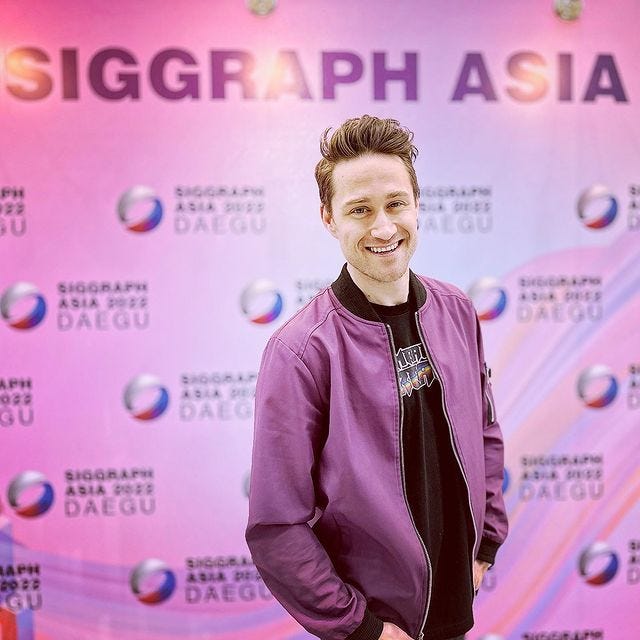Taking VR on the Road
Lessons from hybrid virtual reality live performances in London and South Korea!
I began performing live using `social virtual reality` during the global shutdown as a natural intersection of my background in live theater and interactive content; and to escape my own isolation. The most compelling aspect of the work was creating stories that were truly “responsive” (to borrow a term from Kimberly Adams of ‘Adventure Lab: Dr. Crumb’s School for Disobedient Pets’), inviting the audience to co-create the narrative.
This allows the technology to become less of a “demo” or “expo” and merely an extension of the performer and venue to enhance and experience the traditional stage craft of puppetry, scenery, sound design and theatrical sorcery in a new, interactive way. This was highlighted in the 2020 documentary about my first VR play, ‘Jettison’.
‘Non-Player Character’ was originally commissioned by The Museum of Science in Boston, who gave me an open invitation to develop, “an in-person virtual reality experience for the Omni Dome IMAX theater.” At the time, I was exploring inverting the relationship of the “actor-guide” in virtual reality with a curiosity to remove my own agency and rely on the audience to drive the narrative. This centers on what I refer to as “the hallway” of interactive design. I remember the look on the programmers’ faces when I revealed I was writing a musical about a sad robot (and I am so incredibly grateful they trusted my creative freedom and vision)!
The prototype of #NPCmusical performed in Boston with a fifteen-minute “loop” to rotate audience participants through the experience while seated spectators watched the virtual world on the IMAX screen. I performed for four hours non-stop (8 consecutive loops) and almost immediately it was clear that the secret ingredient was the relationship and banter between the player and non-player audiences. It was like falling in love with live theater all over again.
We began applying to festivals and grants, optimistic to find similar success to my work in other virtual reality projects at SXSW, Venice, Raindance and more. I spent thousands of dollars on application fees all over the world and improving the show tech and content.
This is where my supporters get a more personal, inside glimpse into my process… we were rejected from every VR festival in the world this year and three venues we did book to perform the show cancelled or ghosted us at the last minute (like, seriously). I have not wanted to talk about this publicly as I never want to feed into bitterness or negativity in our small community…and honestly I just felt shocked and hurt. Here I was literally winning top awards while performing with Ferryman Collective and receiving personal invitations from curators, but I could not get anyone to consider ‘Non-Player Character’ for their festival.
The lesson: always ask for feedback.
Friends of mine directly asked a programmer why NPC wasn’t a part of their festival and the immediate response was - “we don’t have an IMAX theater, we didn’t know how to program it.”
Because we’d been rehearsing and workshopping the show entirely virtually, the inherent flexibility and accessibility of the project was obvious to us, on the inside. But all our marketing materials showcased the prototype performance we did in Boston. On an IMAX screen. So everyone assumed the specific venue was a requirement of the show. #facepalm
To capture the accessibility of web-based virtual reality, this meant showing the many ways audiences could experience the show. So we began sharing the show in every method we could imagine… we live-streamed rehearsals; we invited influencers to play test from home; we built a persistent world where users could learn about the show; we released the music as a workshop album; solicited reviews and interviews; we commissioned fan art and animatics; I serenaded strangers on Omegle; and I began cold-calling anyone I knew who might give the show another shot.
This is how we came to be hosted by Open Online Theater Festival at The Rich Mix in London. (Huge shout out to OnBoardXR alum Clemence Debaig who made it happen!) This is exactly what we needed - a blackbox theater with a traditional performing arts audience. They were organizing a showcase of multiple modes of ‘hybrid performance’ and gave us a stage and a time slot. Now we just needed to get over there.
Producing these shows is really producing FOUR different experiences simultaneously. First, there’s the core performance of an actor (and in our case musician) using virtual reality to embody the world and characters of the story. Second, there’s a multi-player audience that uses their devices to interact in real-time with the actor (I compare this to an “on stage” ticket or audience volunteer). Third, the spectators or secondary audience (either on-site or in-world) need to more casually participate and follow the story (similar to an “Orchestra ticket” in a traditional show). And finally, there is often a livestream audience that has no interaction, but still needs to feel like their getting a polished show (I refer to this as the “virtual balcony” ticket).
For Non-Player Character we developed our backend workflow into a single video output (a cinematic POV of the virtual world) and single audio output (all microphones, music and sound effects) to port directly into the existing venue and/or livestream setup. Because the show uses web-based virtual reality, we are device agnostic - We do not require any specific hardware or software, just reliable internet and a web-browser.
Next, my musical director Maurice Soque Jr. and I began taking turns rehearsing at each other’s houses to get comfortable packing all the equipment into 2 carry-on suitcases. This revealed what we absolutely needed in our kit and what we could rent or request “on the ground.” Technical Director, Michael Morran’s work schedule actually would not allow him to travel to London, so he stage managed the live show from Austin, Texas (just like he does every week for rehearsals).
Non-Player Character is now a tour-ready “show in a box” that is not limited to a specific venue or format. And our workflow scales to bring almost any virtual reality experience to a hybrid audience, especially those who do not own virtual reality equipment!
So when Ferryman Collective was headed to SIGGRAPH-Asia in South Korea to present the closing night ceremony, ‘Real-Time Live!’, I knew exactly how to migrate a VR show for both the big screen and live-stream audiences. They rely on VR Chat to power their shows, so I downloaded the Steam VR Version for PC and tethered our audience participant’s POV to output to the projector and world audio to output to the sound system. Then I performed on-stage, un-tethered, while Whitton Frank presented the Company’s work and stopped and started me to showcase elements of their front and back end to create live theater in VR Chat.
In the future, I’m eager to bring live virtual reality storytelling to the masses and hope you will share and support Non-Player Character…and introduce us to your local playhouse / independent cinema!
